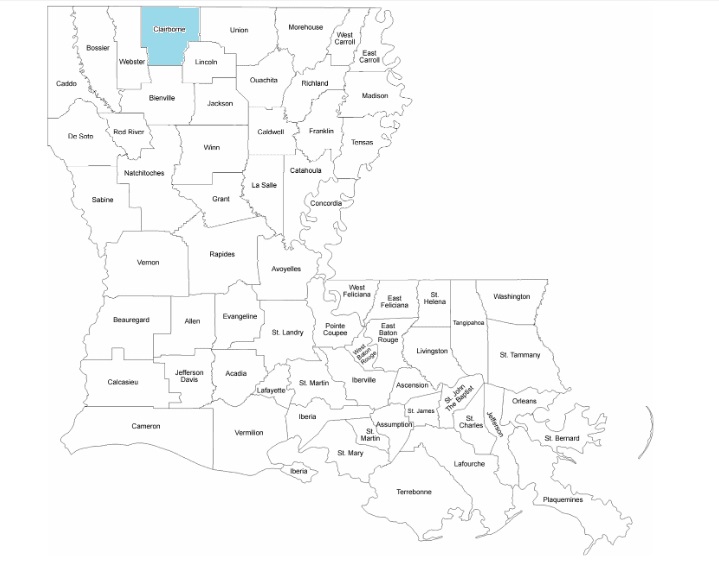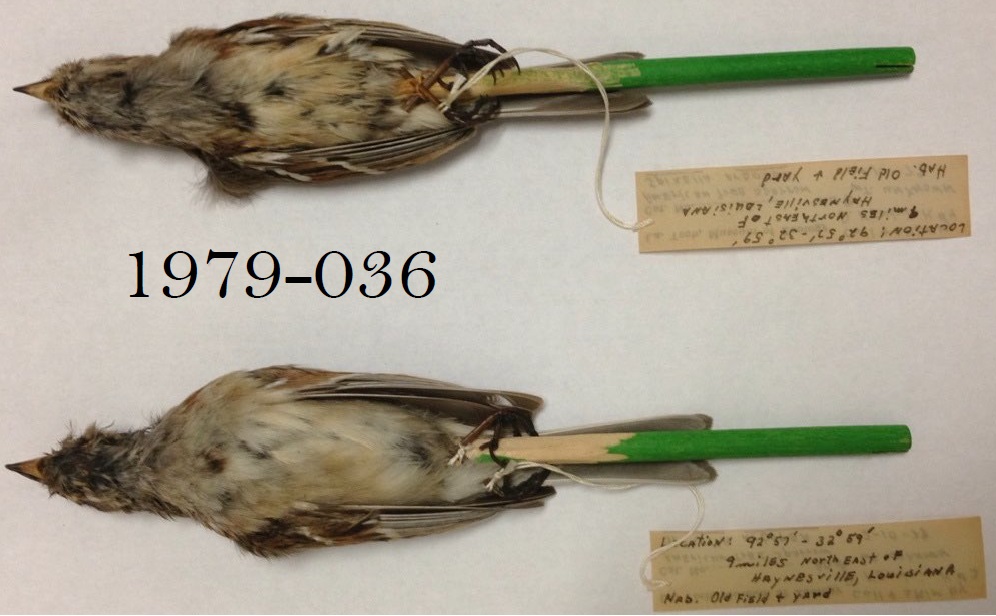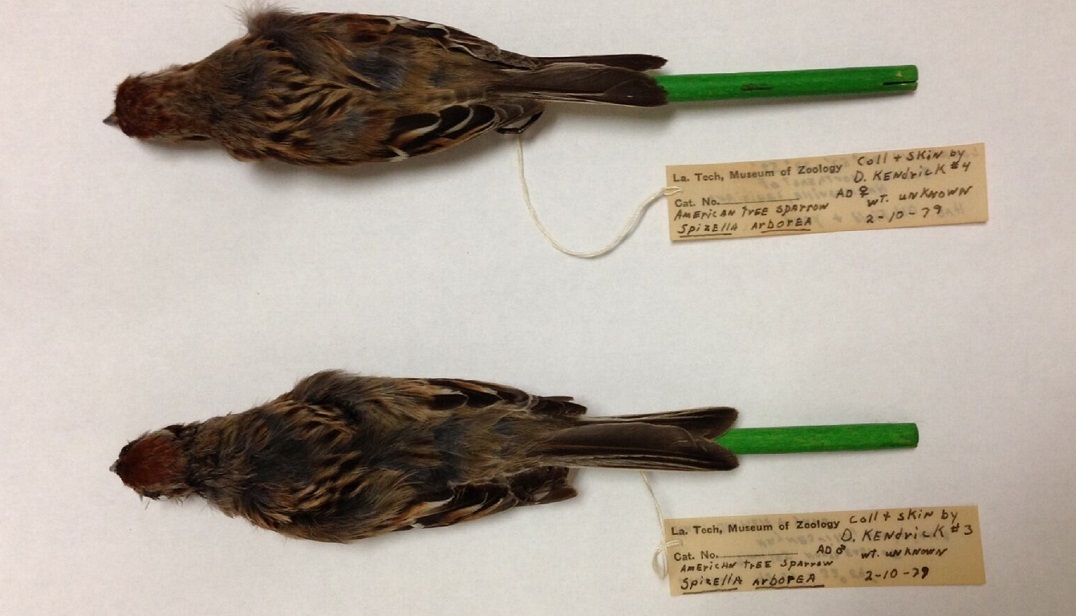


One (1998-163) on 22 April 1998, Gulf of Mexico: Garden Bank 189A oil platform, N27.778611° W93.309444°; Jon R.
King (ph only). Published FN 52:3, p. 344; ph in pictorial highlights: p. 407. This is just the second accepted Louisiana
occurrence.
One (1989-14) on 23 Dec 1989, Evangeline: � mi. E of Hwy. 13 on gravel road, approximately 2 mi. N of Hwy. 10. This record involved a brief sighting of a species for which
there are very few well-documented Louisiana records. Although the description superficially
indicated American Tree Sparrow, dissenting members were not convinced that the bird was
even a Spizella versus a Melospiza. Because Swamp Sparrows can show these same field marks
(e.g., bi-colored bill, rufous cap with grey center, and dark breast spot) used to identify this bird,
members were reluctant to accept the record without more extensive details.
One (86-1) near Ball, Rapides Parish, on 18 December 1985.
One (1997-64) on 20 December 1997, La Salle: Nebo. The main mark given to identify this individual as an American Tree
Sparrow was a dark spot on its breast. Members considered this insufficient to eliminate superficially similar sparrow species (e.g., Swamp Sparrow) or a sparrow missing feathers that could appear as a spot.
One each day (2012-149) on 23 November and 26 December 2012, Ouachita: Ruston, Louisiana Tech University campus,
over Carson-Taylor Hall. Identification was based on single flight calls captured by an automated recording device. The sound clips were so brief/faint that they were difficult to distinguish. Although printed sonograms were provided and were suggestive, there was little analysis/discussion of the data and one sonogram also seemed close to or within the range of variation of other species (e.g., Savannah Sparrow).



Unaccepted Records
One (1977-03; formerly 84-29) near Natchitoches, Natchitoches Parish, on 3 February 1977.